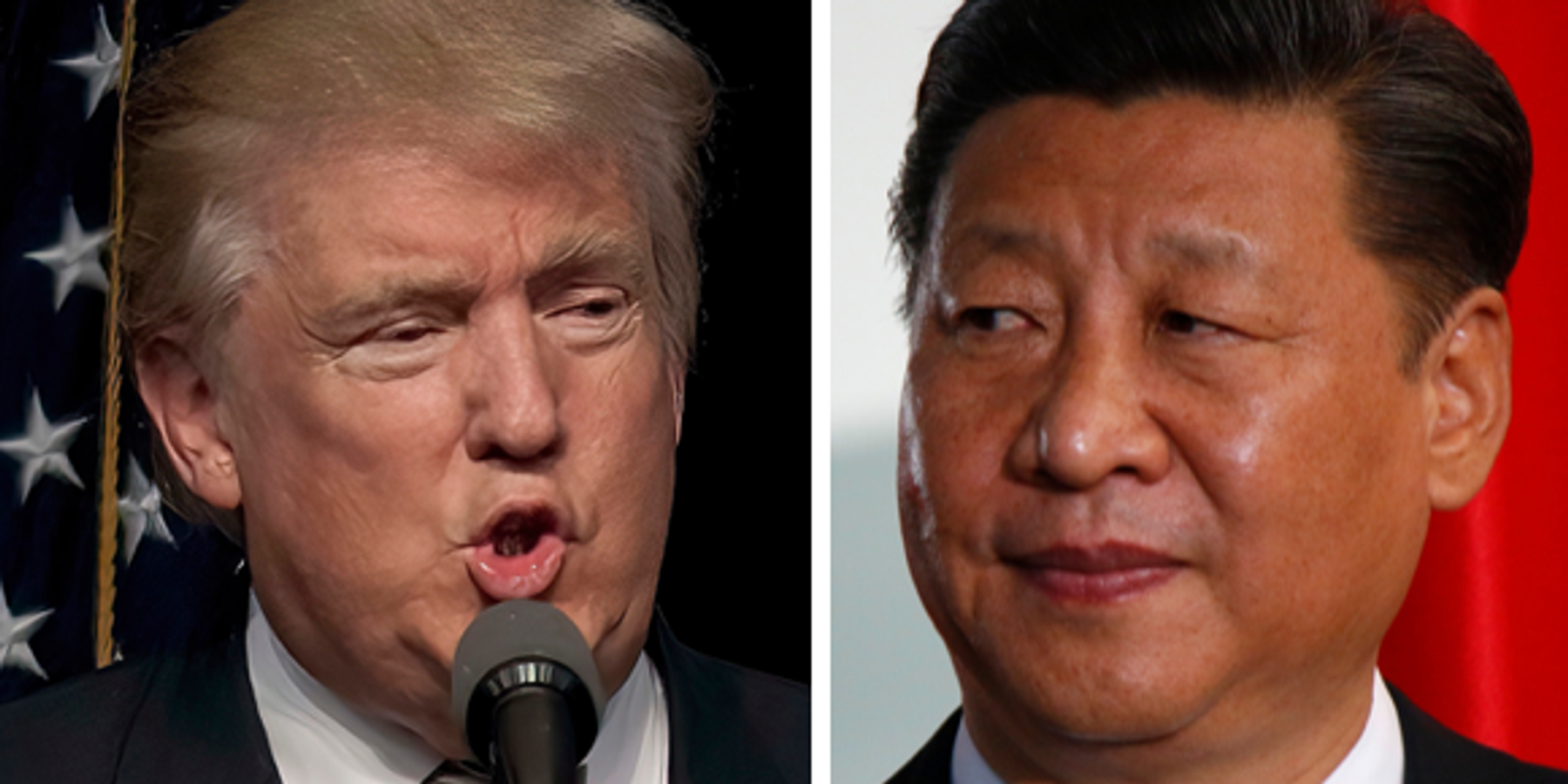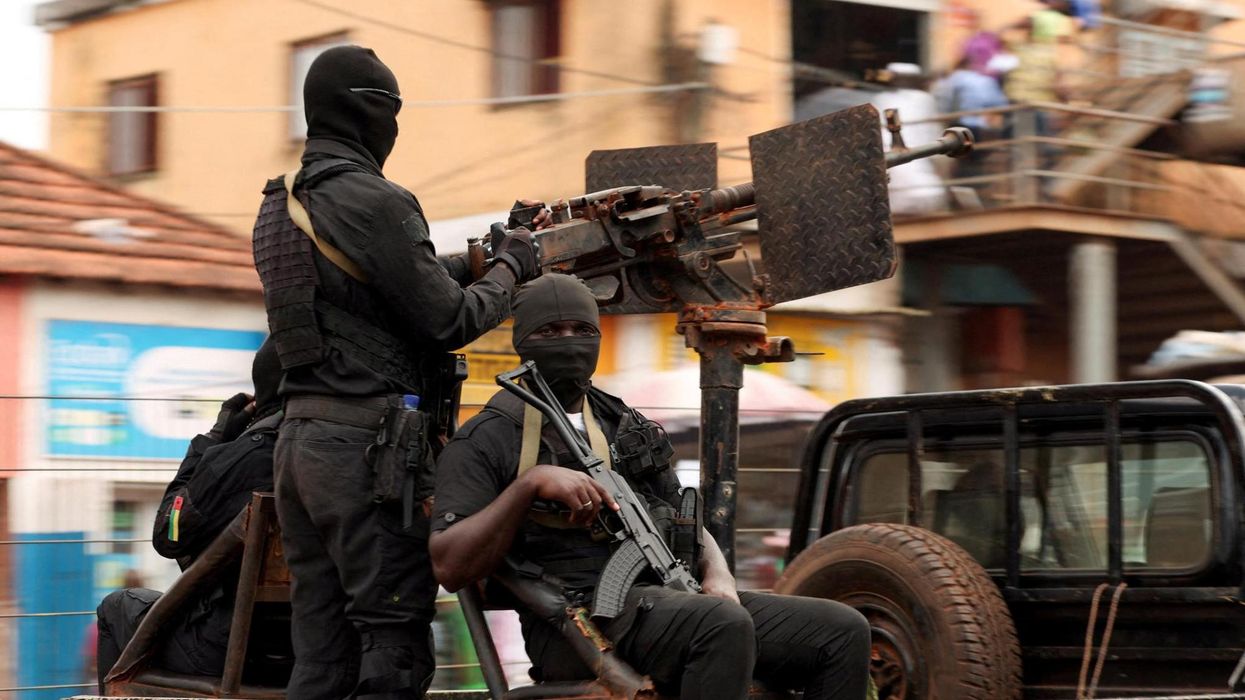Today Trump suspended his global trade war with all countries except China. This confirms that, even as all eyes were on the chaos in the financial markets, the far bigger threat from Trump’s “liberation day” was a sharp escalation in the US–China conflict that could now plausibly turn violent within the next couple years.
Prior to Trump’s “liberation day” the two countries had an unhealthy relationship with steadily building pressures toward conflict. The Biden administration not only retained almost all of the first Trump administration’s antagonistic measures against China but expanded and intensified them. Though it eventually revived the diplomatic exchanges that the first Trump administration shut down, Biden declined to work with China to mitigate the zero-sum forces pushing the two countries against each other.
The new Trump administration quickly imposed a sharp increase on China’s already high tariffs. Yet both sides were initially willing to seek an agreement that could have at least reduced tensions. After the election, Beijing sent a series of delegations to Washington in hopes of understanding what kind of concessions Trump was seeking and how to get talks started. It informally suggested a range of issues on which it could give ground, ranging from currency valuations to guarantees on dollar centrality to industrial investment in the United States.
Trump, for his part, heaped praise on Xi Jinping — “he is an amazing guy” — and repeatedly teased an early meeting between the two. In February he suggested that the United States, Russia, and China enter nuclear arms control talks that could eventually lead to all three cutting their military spending by half. As I argued recently, far from deceit or misdirection, Trump’s whole worldview and mode of reasoning supported the potential for such dealmaking.
That potential is now gone. Instead the U.S. and China have embarked on an escalatory spiral that could lead to disaster for both.
On liberation day, Trump announced that China’s penalty for unfair trading would be an additional 34% increase in tariffs on top of the existing average 42%. At such high rates, few Chinese products would still be competitive in the U.S. market. More significantly, this latest attack convinced the Chinese leadership that the Trump administration is simply uninterested in negotiations and is instead seeking to humiliate China and wreck its economy.
In contrast to its limited response to earlier tariff increases, China has now decided to fight back. It imposed an across-the-board 34% increase on U.S. exports, hitting some $143.5 billion of revenue for American companies. It also placed new restrictions on exports of some strategically important minerals, added some U.S. companies to its list of unreliable businesses, and announced an anti-trust investigation into DuPont.
In its official response, the Chinese government positioned itself as defender of the globalization status quo. It characterized the U.S. aim as “using tariffs to overturn the existing international economic order, placing U.S. interests above the common good of the international community, and sacrificing the legitimate interests of other countries in service to American hegemonic interests.”
The government cast itself as calm and dignified but resolute in the face of an irrational and aggressive United States: “We do not start trouble, but we are not afraid of it either.” A statement placed in People’s Daily reassured the Chinese people on the economy’s resilience and promised significant fiscal support to expand domestic economic demand and government action to help businesses weather the turmoil.
Trump responded with equal resolve but with none of the calm or dignity, posting: “CHINA PLAYED IT WRONG, THEY PANICKED - THE ONE THING THEY CANNOT AFFORD TO DO!”
He then chose the nuclear option, raising tariffs on China an additional 50% starting today. China said it would match that further increase tomorrow. In his tirade postponing liberation day for other countries, Trump tacked on an additional 21% increase. In total, since the start of Trump’s term, the United States has now raised tariff rates by 125% and China by 84%.
In line with the president’s post, conventional wisdom in Washington is that China’s economy is so fragile it has no leverage in the economic conflict. Cut off from the U.S. market, they think, China will simply flood other exports markets and alienate Europe, Japan, and the Global South in the process.
Such overconfidence may lead to serious miscalculations as the fighting intensifies.
China has indeed been struggling since 2021 with a slow collapse of its huge real estate bubble and the uneven transition to a new structure of growth, leading to high youth unemployment and persistent deflationary pressures. It has a huge trade surplus that needs to find an outlet.
But Chinese economic policymakers have considerable space for fiscal stimulus to increase domestic demand if they choose to use it. Up to this point they have refrained because they were trying to maintain momentum on their agenda of structural economic reforms. Faced with the emergency of international conflict, they are likely to open the spigots.
Trump, in contrast, may have pulled back from his economic offensive on the whole world but he has not repudiated it. That means the U.S. economy and economic relations with other trading partners face a period of debilitating uncertainty that could cause considerable damage. China’s growth may surge even as the U.S. faces rising inflation and slowing growth.
The United States and China now find themselves locked in confrontation. The main force restraining economic warfare up to this point was simply the failure of American measures to undermine the Chinese economy. We have now blown past that condition.
Where might the conflict go from here? The most likely outcome of a hard decoupling between the U.S. and Chinese economies is terrible disruption to global supply chains. Many companies will simply shut down, but large smuggling networks will also emerge as Chinese producers seek access to the American market and American producers cast about for crucial inputs that are suddenly gone. Some Chinese production will move to the Latin American countries largely spared on liberation day.
That will set the stage for further escalation. The United States will seek to suppress smuggling. China will target strategically important goods to deny them to American producers. Both sides will start to lean on third countries to maintain their influence, giving rise to the possibility of proxy conflict. Most concerning, both sides increasingly will be tempted to impose pain on the other by striking more directly at their national security sensitivities.
China’s general practice is to meet each escalation from the United States with a proportionate response. It also has strong incentives to avoid unhinged reactions since it wants to use aggressive American measures against other countries to shore up diplomatic relations in the region and with Europe.
The same cannot be said of the Trump administration. Trump himself seems fixated on extracting a performance of submission to which Chinese leaders will never acquiesce. As his frustration mounts — and particularly if the Chinese economy does prove resilient to his assault — he will become more and more receptive to the national security team he built. In contrast to his own instincts, Trump’s top military and economic advisers are almost without exception committed to confrontation with China.
The reported contents of the Pentagon’s Interim National Defense Strategic Guidance suggest how easily economic warfare could slip toward military conflict. Defense Department leaders may seize on the collapse in U.S.–China relations to pursue the crash military buildup in Asia they have defined as “the cardinal objective of US grand strategy”.
Such a course was destabilizing even when the Biden administration pursued it alongside attempts to establish guardrails limiting conflict. In a context of mounting economic pain on both sides, with surging nationalism in both countries becoming a binding force on leaders, both governments are likely to choose more destructive responses to what they regard as provocations from the other side.
A single misstep around Taiwan or in the South China Sea could end in catastrophe.
- Trump’s China policy: A complete unknown? ›
- Don't let US-China trade disputes turn into a shooting war ›
- Vietnam's fortunes actually take a dramatic turn, and not for worst | Responsible Statecraft ›
- US-China trade war: Escalate to de-escalate to escalate? | Responsible Statecraft ›
- An unexpected pawn: Vietnam's key role in Trump's trade war | Responsible Statecraft ›
- Will Trump choose deal or discord with China | Responsible Statecraft ›
- In Trump push to decouple, the dollar might be first real victim | Responsible Statecraft ›
















